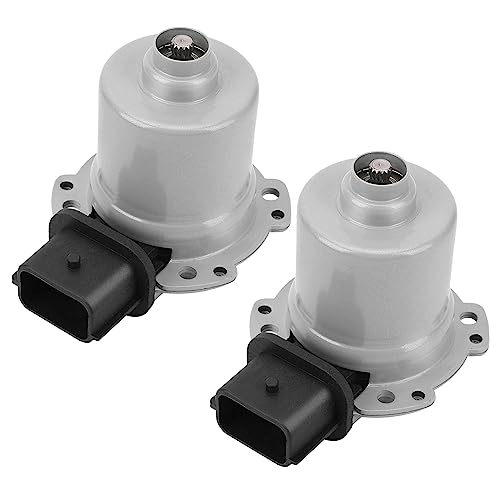Maintaining the optimal performance of your Ford Focus involves regular checks of essential fluids, particularly the transmission fluid. This critical component ensures smooth gear shifts and overall vehicle functionality. In this article, we will guide you on how to check Ford Focus transmission fluid effectively. By understanding the tools required and the step-by-step process, you can ensure your vehicle operates efficiently. Moreover, we will discuss how to interpret the condition of the fluid and the importance of maintaining proper fluid levels for long-term vehicle health.
(Disclosure: These links earn us a commission if you buy which are at no extra cost to you—thanks for supporting us!)
Key Takeaways
Transmission fluid is essential for lubrication, cooling, and smooth gear shifts in vehicles.
A proper set of tools, including a dipstick and funnel, is necessary for checking fluid levels accurately.
Healthy transmission fluid should be clear and vibrant red; discoloration indicates contamination and potential issues.
Regular checks and maintenance of transmission fluid levels are crucial for the vehicle’s efficiency and longevity.
Understanding Transmission Fluid
Understanding transmission fluid is essential for ensuring optimal vehicle performance and longevity, as it plays a critical role in lubricating and cooling the transmission components. This fluid facilitates smooth gear shifts and helps maintain proper hydraulic pressure within the system. Additionally, high-quality transmission fluid is designed to resist breakdown and oxidation, which can lead to increased wear and tear on internal parts. Regular checks and maintenance of transmission fluid levels can prevent potential issues that may arise due to contamination or depletion of the fluid.
Different types of transmission fluid are formulated for specific vehicle makes and models, including synthetic and conventional options. It is crucial to use the manufacturer-recommended fluid to ensure compatibility and performance. The color and consistency of the transmission fluid can indicate its condition, with healthy fluid typically exhibiting a bright red hue. Over time, transmission fluid can become dark and gritty, signaling the need for replacement. Ultimately, understanding the importance of transmission fluid can aid vehicle owners in making informed decisions regarding maintenance and repairs.
Tools You Will Need
Essential tools for checking the transmission fluid in a Ford Focus include a dipstick, a funnel, and a clean cloth for wiping the dipstick. The dipstick is crucial for measuring the fluid level and ensuring it is within the required range. A funnel assists in adding fluid without spilling, which is especially important to maintain a clean working area. A clean cloth is necessary for removing any contaminants from the dipstick, ensuring accurate readings. Additionally, a flashlight may be beneficial for inspecting the fluid’s color and clarity. A container or pan can be used to catch any overflow or spills during the process. Gloves are recommended to keep hands clean and protect against potential chemical exposure. A torque wrench may be necessary for reassembling any components that require it after fluid checks. Lastly, having a service manual on hand can provide specific guidance tailored to the Ford Focus model.
Step-by-Step Checking Process
The step-by-step checking process for transmission fluid in a Ford Focus involves several key actions to ensure accurate assessment of fluid levels and condition. First, park the vehicle on a level surface and engage the parking brake. Next, start the engine and allow it to reach normal operating temperature while keeping the transmission in the “Park” position. With the engine running, locate the transmission dipstick, which is usually found near the back of the engine bay. Carefully remove the dipstick, wiping it clean with a lint-free cloth before reinserting it fully into the tube. After removing it again, observe the fluid level and color against the markings on the dipstick. If the fluid level is low, add the recommended transmission fluid type as needed. Additionally, check for any burnt smell or grainy texture, which may indicate that the fluid requires changing. Finally, securely replace the dipstick and close the hood, ensuring all components are properly sealed.
Interpreting Fluid Condition
Interpreting fluid condition involves assessing color, clarity, and odor to determine whether the transmission fluid requires replacement or maintenance. A healthy transmission fluid typically exhibits a clear, vibrant red color, indicating proper lubrication. Conversely, a dark brown or black hue suggests that the fluid is contaminated and may need changing. Clarity is another crucial aspect; fluid that appears cloudy or contains particulates indicates potential wear or breakdown of internal components. Additionally, the odor of the transmission fluid can provide insights; a burnt smell often signals overheating or degradation. It is essential to also consider the fluid’s viscosity, as thin or watery fluid may not provide adequate protection. Regular inspections can help in identifying these indicators before they lead to more significant issues. Proper interpretation of fluid conditions can enhance the longevity and performance of the transmission system. Ultimately, understanding these factors is vital for maintaining the health of a Ford Focus’s transmission.
Maintaining Proper Fluid Levels
Proper fluid levels are crucial for ensuring the efficient operation and longevity of the transmission in a Ford Focus. Regular checks should be part of the vehicle maintenance routine to prevent potential issues. It is advisable to consult the owner’s manual for specific guidelines on checking fluid levels. The transmission dipstick, typically located near the back of the engine bay, should be removed and wiped clean before re-inserting it for an accurate reading. The fluid level should be within the designated range marked on the dipstick. If the fluid is low, it may indicate a leak or other mechanical issues that require attention. Additionally, the type of fluid used should comply with manufacturer specifications to maintain optimal performance. Contaminated or degraded fluid can adversely affect transmission functionality, necessitating timely replacement. Ultimately, maintaining proper fluid levels is essential for the overall health of the transmission system.
Frequently Asked Questions
How often should i check my transmission fluid in a ford focus?
Regularly checking transmission fluid is essential for maintaining the health of your vehicle’s transmission system. It is generally recommended to inspect the transmission fluid at least once every 30,000 to 60,000 miles or during routine maintenance intervals. Additionally, if you notice any signs of transmission issues, such as unusual noises or shifting problems, it is prudent to check the fluid sooner. Consistent monitoring can help prevent costly repairs and ensure optimal performance of your vehicle.
What are the symptoms of low or dirty transmission fluid?
Low or dirty transmission fluid can manifest through several noticeable symptoms that may indicate potential issues with the vehicle’s transmission system. Common signs include slipping gears, delayed or rough shifting, and unusual noises such as grinding or whining when the vehicle is in gear. Additionally, warning lights may illuminate on the dashboard, and drivers may experience overheating of the transmission, which can lead to further complications if not addressed promptly. It is essential to monitor these symptoms closely, as they can significantly impact the vehicle’s performance and longevity.
Can i use any type of transmission fluid for my ford focus?
It is crucial to use the correct type of transmission fluid specified for your vehicle to ensure optimal performance and longevity of the transmission system. Different vehicles are designed with specific fluid formulations that cater to their unique engineering requirements. Using an alternative or incompatible fluid can lead to reduced lubrication, increased wear, and potential transmission failure. Therefore, always refer to the owner’s manual or consult a qualified mechanic to determine the appropriate transmission fluid for your Ford Focus.
If you’re looking to enhance your vehicle maintenance knowledge, you might find it useful to learn about other essential functions, such as how to turn on the headlights on a Chrysler Pacifica. This guide will provide you with step-by-step instructions to ensure you can operate your vehicle safely at night. Check it out here: how to turn on headlights on chrysler pacifica.
Last update on 2025-10-27 / Affiliate links / Images from Amazon Product Advertising API






